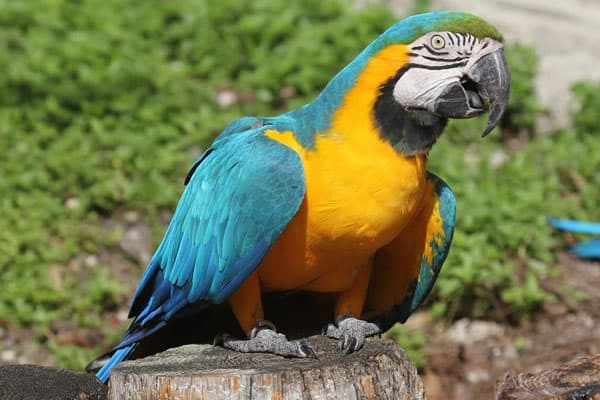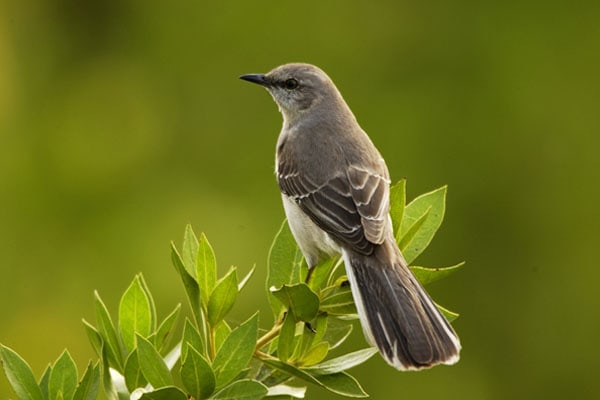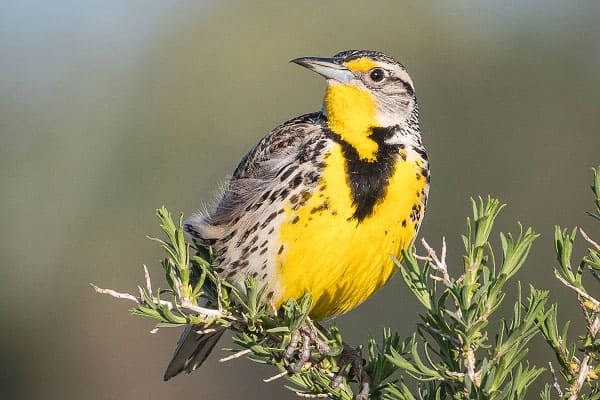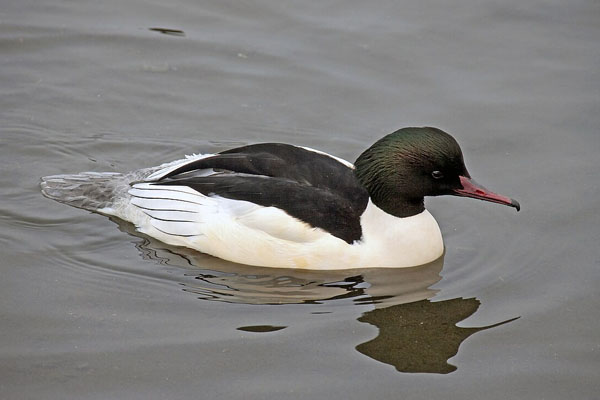In this comprehensive guide, we will explore a variety of birds whose names start with the letter M. From the colorful macaw to the melodious mockingbird, get ready to discover some fascinating avian species.
Key Takeaways:
- There is a diverse array of bird species that start with the letter M.
- Macaws are known for their vibrant plumage and ability to mimic human speech.
- Mockingbirds have the remarkable talent of imitating over 100 different vocalizations.
- Magpies showcase their intelligence while collecting shiny objects.
- Mergansers have specialized bills that help them catch fish underwater.
Here we’ll learn Different Types of Birds That Start With Letter M
1. Majestic Macaw
The macaw is a stunning bird known for its vibrant plumage, which comes in a variety of bright colors. Native to Central and South America, macaws captivate with their size, intelligence, and ability to mimic human speech.
Macaws are a genus of birds belonging to the family Psittacidae, which includes parrots. Their distinctive appearance and charismatic personalities make them popular pets and subjects of fascination among bird enthusiasts.
“The macaw’s plumage is a feast for the eyes, with its brilliant reds, blues, yellows, and greens. It’s like witnessing a living rainbow taking flight.”
Macaws are highly social creatures and are known for their strong bond with their human caretakers. They have a lifespan of up to 50 years or more, making them lifelong companions.

The macaw’s vibrant feathers serve several purposes. Not only do they attract mates during the breeding season, but they also help the birds camouflage in their natural habitats, such as the dense rainforests they call home.
Macaw Species and Varieties
There are several species of macaws, each with its unique characteristics:
- The Scarlet Macaw (Ara macao) – Known for its gorgeous red and blue plumage, the scarlet macaw is one of the most colorful members of the macaw family.
- The Blue-and-Yellow Macaw (Ara ararauna) – With its vibrant blue and yellow feathers, this macaw species is easily recognizable and commonly seen in the pet trade.
- The Green-winged Macaw (Ara chloptera) – Displaying a combination of red, green, and blue plumage, the green-winged macaw is a playful and sociable bird.
These are just a few examples of the macaw species, each possessing its own unique beauty and charm. Their captivating appearance and engaging personality make macaws a beloved choice for bird enthusiasts and conservation efforts alike.
2. Melodious Mockingbird
The mockingbird is renowned for its ability to mimic the songs of other birds and even various sounds it hears in its environment. These talented songsters can imitate over 100 different vocalizations, making them a joy to listen to. Mockingbirds belong to the family Mimidae and are known for their remarkable vocal abilities.
Mockingbirds are found in various regions, including North America, Central America, and the Caribbean. They are medium-sized birds, typically measuring around 10 inches in length. Their plumage is often gray or brown, with white patches on their wings and tails.

One of the most fascinating aspects of mockingbirds is their ability to imitate the songs of other bird species. They have a talent for accurately reproducing the melodies and tones of other birds, creating a symphony of sounds in their repertoire. Apart from bird songs, mockingbirds can also mimic other environmental sounds, such as car alarms, sirens, and even the barking of dogs.
“The mockingbird can imitate a song so clearly and perfectly that even the original bird can be fooled into thinking it’s its own voice.”
Mockingbirds engage in vocal mimicry for various reasons, including attracting mates, defending their territory, and establishing dominance. By accurately reproducing the songs of other male birds, the mockingbird can create confusion and deter potential rivals from encroaching on its territory.
Scientists believe that mockingbirds have a highly developed auditory learning system that enables them to learn and mimic different sounds. They have precise control over their vocal muscles, allowing them to produce accurate imitations.
Mimicry in Nature
Mimicry is not unique to mockingbirds. It is a phenomenon observed in various other species, including insects, reptiles, and mammals. Mimicry serves both defensive and offensive purposes, allowing organisms to deceive predators or prey.
In the avian world, the mockingbird is one of the most proficient mimics, but it is not alone. Other birds, such as the superb lyrebird and the common starling, also possess remarkable vocal mimicry abilities.
The superb lyrebird, native to Australia, can imitate a wide range of sounds, including the calls of other bird species, human speech, and even the sound of chainsaws. Male lyrebirds incorporate these imitations into their elaborate courtship displays, impressing potential mates.
The common starling, found in Europe, has an impressive repertoire of vocalizations. They can accurately mimic songs of other birds, car alarms, and even human speech. The mimicry of starlings is thought to be influenced by social interactions and the desire to communicate within a flock.
| Bird | Region | Mimicry Abilities |
|---|---|---|
| Mockingbird | North America, Central America, Caribbean | Can imitate over 100 different vocalizations |
| Superb Lyrebird | Australia | Imitates bird calls, human speech, and environmental sounds |
| Common Starling | Europe | Mimics songs of other birds, car alarms, and human speech |
Mockingbirds, along with other vocal mimicry experts, remind us of the incredible diversity and adaptability of birds and their ability to communicate in unique and surprising ways. So why not spend some time in nature, listening to the melodious tunes of these remarkable songsters, and appreciate the wonders of bird mimicry.
3. Monochrome Magpie
With their distinctive black and white plumage, magpies are known for their intelligence and curious nature. These birds are often associated with collecting shiny objects, showcasing their resourcefulness. These birds are also included in out list of birds whose names start with letter M.
Intelligent and Inquisitive
Magpies, members of the Corvidae family, are renowned for their high level of intelligence. Their intelligent behavior sets them apart from many other bird species. Magpies have been found to possess remarkable problem-solving abilities and an innate curiosity that drives them to explore their surroundings.
These intelligent birds have complex social structures and exhibit remarkable communication skills. They are known for their ability to recognize themselves in a mirror and even understand that other magpies are their reflections. This self-awareness is a testament to their cognitive abilities.
The Black and White Beauty
One of the most striking features of magpies is their black and white plumage. Their feathers create a beautiful contrast, making them easily recognizable and memorable. The glossy black feathers contrast with the brilliant white on their undersides, wings, and tail feathers.
Magpies have a long, graduated tail that adds to their distinctive appearance. They hold their tails in an elegant, upright fashion, enhancing their grandeur as they move gracefully through the air.
Collecting Curiosities
While their intelligent behavior and black and white plumage are fascinating, magpies are best known for their penchant for collecting shiny objects. This behavior, called “magpie syndrome,” is believed to be related to their inherent curiosity and attraction to bright, sparkly items.
Magpies have been observed bringing back various items to their nests, including jewelry, coins, and even small trinkets. This behavior has led to many superstitions and folk tales associating magpies with stealing shiny objects. However, scientists believe that magpies are simply attracted to the glitter and may collect these objects as decorations or for their reflective properties.
Representing Wisdom and Adaptability
In many cultures, the magpie symbolizes wisdom and intelligence. Their presence in folklore and mythology often portrays them as clever and resourceful birds. Magpies are valued for their adaptability, thriving in a wide range of habitats, including forests, urban areas, and agricultural landscapes.
The intelligent and resourceful nature of magpies makes them highly adaptive to different environments, allowing them to find food and shelter even in challenging conditions.
Magpie Conservation
While magpies are not currently considered a threatened species, habitat loss and destruction pose significant challenges to their populations. Conservation efforts focus on protecting and restoring the diverse habitats that magpies rely on, including woodlands, meadows, and urban green spaces.
| Common Name | Scientific Name | Conservation Status |
|---|---|---|
| European Magpie | Pica pica | Least Concern |
| Australian Magpie | Gymnorhina tibicen | Least Concern |
| Black-billed Magpie | Pica hudsonia | Least Concern |
| Yellow-billed Magpie | Pica nuttalli | Endangered |
Meadowlark and Merganser
Meadowlarks and mergansers are two distinct species of birds that inhabit different habitats, yet both contribute to the diverse beauty of the avian world. Let’s delve into the characteristics of these fascinating creatures and explore their unique qualities.
4. Meadowlark

The meadowlark, known for its melodious songs, is a familiar sight in open grassland habitats. With its vibrant yellow plumage adorned with black markings, this songbird adds a touch of color to the serene prairie landscapes. Their enchanting melodies resonate through the air, evoking a sense of tranquility and harmony.
The melodic songs of the meadowlark bring joy and serenity to the vast grasslands where they thrive.
These birds have adapted well to prairie habitats, where their varied diet consists of insects, seeds, and fruits. They can often be spotted perched on fence posts or soaring through the open skies, filling the meadows with their beautiful melodies.
5. Merganser

Merganser are also in our list of birds that start with letter m. In contrast to the meadowlark’s terrestrial lifestyle, the merganser is a waterfowl species that is highly specialized for a life in aquatic environments. Sporting a long, slender bill lined with serrated edges, these birds are skilled divers and adept fishermen.
The merganser’s bill allows it to catch fish underwater, making it a formidable hunter in the water. These birds can be found in various types of wetland habitats, such as lakes, rivers, and coastal areas, where they navigate the waters with ease.
With their streamlined bodies and webbed feet, mergansers are well-suited to their aquatic lifestyle. Their diving abilities and keen eyesight enable them to locate and capture fish with precision, ensuring a steady supply of food.
While meadowlarks and mergansers may differ in their choice of habitats and hunting techniques, both species exemplify the incredible diversity and adaptability found within the avian world. Each bird contributes its unique charm and characteristics to the rich tapestry of nature.
Mynas and Martins
Mynas and Martins are two fascinating birds species that start with letter M and contribute to the rich diversity of avian life. Let’s explore these songbirds and discover their unique characteristics and adaptability to various habitats.
6. Mynas: Adaptable Urban Songbirds
Mynas, also known as mynah birds, are highly adaptable songbirds that have successfully made urban environments their home. They are resilient and thrive in urban settings, often seen in parks, gardens, and city streets. These birds have proven their urban adaptability by adjusting to the presence of humans and utilizing anthropogenic resources to their advantage.
One of the most striking features of mynas is their vocal abilities. They are excellent mimics and can imitate a wide range of sounds, including human speech, other bird songs, and even the sounds of machinery and telephones. Their melodic songs fill the urban landscape, adding a touch of nature to our bustling cities.
Mynas are known for their intelligent and curious nature. They are often seen exploring their surroundings, searching for food and engaging in social interactions. Despite their adaptability to urban environments, it is important to note that mynas are still wild birds and should be appreciated from a respectful distance.
7. Martins: Swift-Flying Aerial Performers
Martins are another group of fascinating songbirds known for their swift flight and aerial acrobatics. These birds often nest in colonies, creating mesmerizing aerial displays as they twist and turn through the sky. Watching a flock of martins flying together is a sight to behold.
Martins have sleek bodies designed for speed and maneuverability. They are excellent fliers and spend a significant amount of time in flight, hunting for insects on the wing. These birds are voracious insectivores, controlling populations of flying insects and providing valuable ecosystem services.
While many martin species are known for their aerial prowess, one notable example is the purple martin. This migratory birds that start with M is a beloved sight during the summer months in North America, where people erect specially designed houses to attract them and provide nesting sites.
| Mynas | Martins |
|---|---|
| Highly adaptable to urban environments | Swift-flying birds |
| Excellent mimics | Frequent nesters in colonies |
| Curious and intelligent | Hunters of flying insects |
Both mynas and martins contribute to the beauty and biodiversity of our world. Their adaptability, vocal talents, and unique behaviors make them valuable additions to our avian communities. Take a moment to appreciate the mynas’ melodious songs and the martins’ mesmerizing aerial displays the next time you encounter them in their natural habitats.
Magpie-Lark and Muscovy Duck
When it comes to water bird species, the magpie-lark and the Muscovy duck are two fascinating examples with unique and captivating characteristics.
8. Magpie-Lark
The magpie-lark, also known as the peewee, is a small black and white bird that can be found in various habitats across Australia. With its distinctive calls and playful demeanor, this agile avian species is a delight to observe. Magpie-larks are not true larks but belong to the monotypic family Grallinidae. They are known for their acrobatic flight patterns and nest-building skills, often constructing intricate mud nests on tree branches or man-made structures.
These insect hunters have an important ecological role, as they feed on a variety of insects, helping to control their populations. With their sharp beaks and agile movements, magpie-larks can catch flying insects on the wing or forage on the ground for small invertebrates. Their adaptability to both urban and rural environments makes them a common sight in parks, gardens, and open grasslands.
9. Muscovy Duck
The Muscovy duck is a large waterfowl species native to Mexico, Central America, and South America. With its striking appearance, including feather patterns ranging from solid black to white with mottled or iridescent markings, the Muscovy duck stands out among other ducks. Unlike most ducks, Muscovy ducks have claws on their webbed feet, which enables them to perch in trees and navigate on land more easily.
In addition to their unique appearance, Muscovy ducks are known for their insect-eating habits. They are efficient insect hunters, foraging on the ground for ants, beetles, grasshoppers, and other small invertebrates. This dietary preference makes them valuable allies for pest control in agricultural areas and gardens.
These water birds can often be found in a variety of habitats, including lakes, ponds, swamps, and rivers. Muscovy ducks are also well-adapted to urban environments, where they can be seen exploring parks, golf courses, and even residential areas.
Mallard to Mockingbird
As we reach the final section of our guide, let’s delve into a diverse range of birds that start wit letter M, starting with the mallard, a familiar dabbling duck known for its colorful plumage and graceful presence near ponds and lakes. Continuing our journey, we encounter the masked booby, a seabird with striking black and white feathers that can be found gliding effortlessly over the ocean.
Next, we encounter the majestic merlin, a small but powerful bird of prey known for its swift flight and keen hunting skills. Moving on, we come across the vibrant mountain bluebird, whose azure-blue plumage brightens up the alpine meadows it inhabits.
Continuing our exploration, we discover the fascinating manakin, a tropical bird known for its elaborate courtship dances. Alongside, we encounter the imposing marabou stork, with its enormous wingspan and distinctive bare head. We then come across the melodious mistle thrush, whose enchanting song can be heard echoing through the woodland.
Concluding our journey, we celebrate the mockingbird, a renowned mimic who serenades us with its repertoire of intricate songs. Each of these birds, from the mallard to the mockingbird, contributes to the rich tapestry of avian diversity in our world.
Check Our Previous Articles:
| 7 DOVES (& PIGEONS) THAT LIVE IN ARIZONA |
| Top 7 Types of Blackbirds in Colorado! |
| Mousebirds (Family Coliidae) With Photos |
Frequently Asked Questions About Birds That Start with M
Q1: What is the name of the bird in the letter M?
The bird is a Magpie.
Q2: Is a magpie a bird?
Yes, a magpie is a bird.
Q3: What are the names of the 10 animal birds?
The names can vary, but here are some examples: Eagle, Owl, Falcon, Hawk, Sparrow, Robin, Crow, Pigeon, Parrot, and Seagull.
Q4: What are all the birds’ names?
Listing all the bird names would be exhaustive, as there are thousands of species. However, some common ones include Sparrow, Robin, Eagle, Hawk, Owl, Parrot, Penguin, Flamingo, Crow, and Seagull.


Add comment